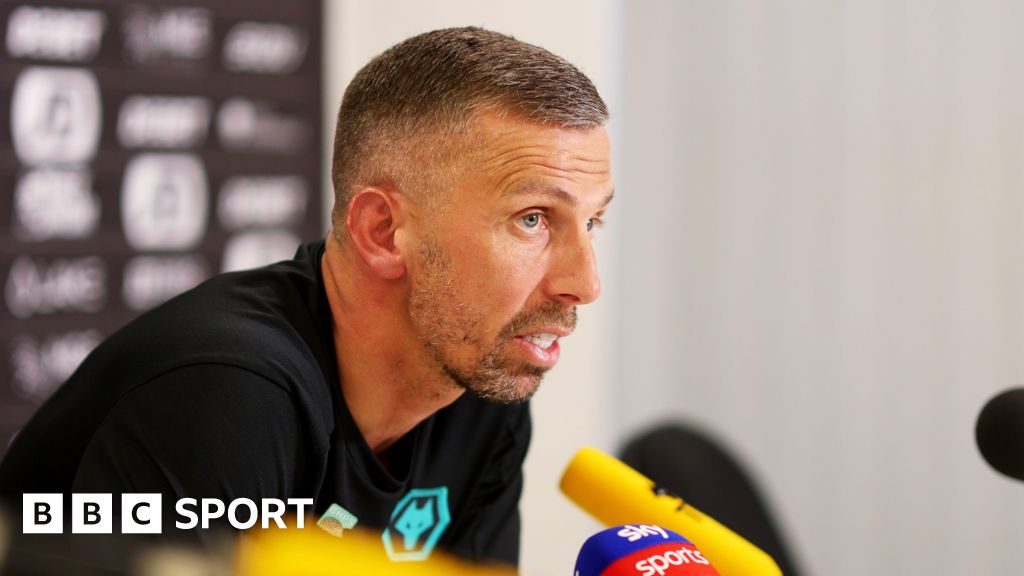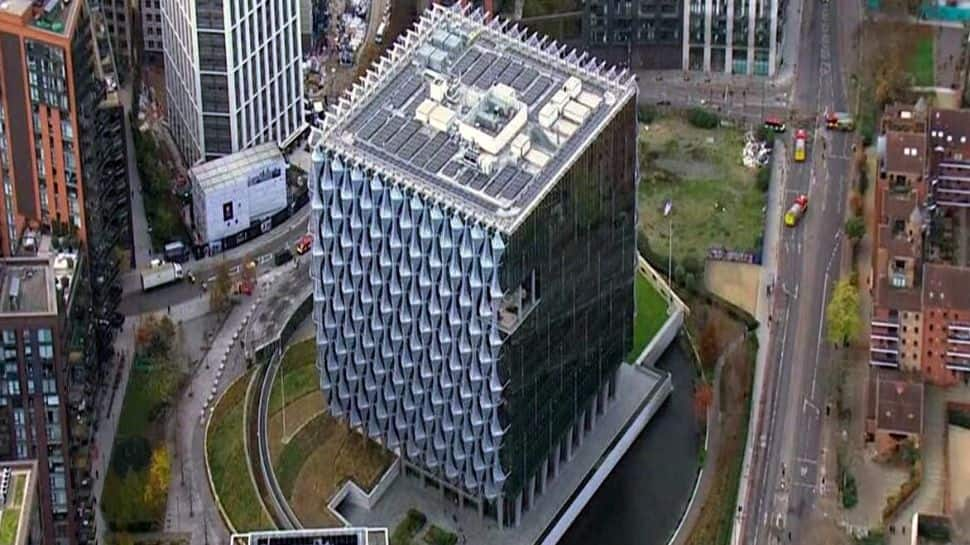Fashion
London fashion week: good times, bad times, who can say?

The question at London fashion week is: do you want the good news or the bad news first? The outlook for British fashion depends where you look.
At SS Daley’s show in a light-flooded Royal Academy gallery, the picture looked rosy. Harry Styles, who became Steven Stokey-Daley’s financial backer when he took a minority stake in the brand earlier this year, formed a front row power couple next to Anna Wintour, who teamed her signature shades with a stars-and-stripes Harris-Walz campaign scarf.
The show was a hit, the audience charmed by dalmatian-printed silk separates and romantically oversized Brideshead Oxford bags. The actor Emma Corrin, watching from the front row, was already wearing one of the dresses.
The appointment of Sarah Burton to the distinguished Paris house of Givenchy, proof that British talent still leads the fashion world, is also cause for celebration – as is the return of Christopher Kane, whose label went into administration last year, back on the scene with a one-off collection for the British brand Self-Portrait.
A reception at No 10 on Monday promises a chance for a warmer relationship after the froideur that existed between the previous government and an industry still fuming about Brexit.
But others see a far gloomier forecast. The recent collapse of Matches online retailer left many independent brands out of pocket, and the wider e-commerce landscape remains shaky. Molly Goddard is among the high-profile absences from this week’s catwalk as designers lick their wounds and prepare to regroup. With headlines screaming about Broke Britain, prospects for support look decidedly slim.
Self-Portrait is one of London fashion’s most substantial recent success stories. Founder Han Chong has hit a commercial sweet spot with his dresses, which look and feel designer, but at around £350 are a fraction of big-name luxury prices. Chong is using his success to bring Kane – a forerunner in the genealogy of London’s finest party-dress designers – back into the fashion fold as an artist-in-residence at Self-Portrait, with a one-off collection on sale in November.
Chong was a student at Central St Martins when Kane’s eye-popping neon-and-lace debut anointed him as Donatella Versace’s protege and London’s golden boy. “I remember feeling like his clothes marked the arrival of something truly modern,” Chong remembered. Earlier this year he texted Kane to suggest a collaboration, and “was thrilled when he said yes”.
Harris Reed, fresh from dressing Jenna Ortega in a dress made from upcycled paper at the Venice film festival, turned the Tate Modern into his catwalk. A lace collar was the size of a bicycle wheel, ribbon-tied cuffs trailed to the floor, a sheer net ballgown revealed platform boots worn underneath. “The more theatrical I get, the bigger the appetite,” Reed explained. “Building a fashion brand is about building a world,” he said. “From day one, I was looking at the designers who’ve done that: the Tommy Hilfigers, the Tom Fords, the Michael Kors, people that have been able to embody a universe.”
Rejina Pyo also knows how to make a splash with shows – a 2021 spectacle at the London Aquatic Centre featured Team GB divers wearing her swimsuits – but stepped back from the catwalk two years ago. A collaboration with the British luxury brand Mulberry was enough to maintain her profile this season, with the distinctive cargo-styled shoulder bags spotted on several front rows, and celebrated with a dinner thrown by Pyo for friends and editors.
Pyo was not affected by Matches’ implosion, selling direct from her London store. “I get to see who is buying my clothes, to hear where they will wear them. That insight is really valuable to me.” As an independent brand, “a show is a huge expense for a moment that lasts 15 minutes. I’d much rather host an event where I can talk to people.”
Having relocated to Somerset and restructured her business, Alice Temperley is in London not to stage a show but preparing to open a new boutique. Robust demand for bespoke wedding dresses has sustained her through lean times. “We are still feeling the impact of Covid and Brexit. Those feel like such boring words to say now, but they are still very real issues. We were lucky, because we had brides travelling from LA turning up on our doorstep in Somerset.”
Temperley now plans to build out her daywear – think luxury knits, and glamorous tailoring – and is introducing a digital “passport” to facilitate moving toward buying back clothes from customers, and offering an in-house pre-loved collection.
after newsletter promotion
The designer Maria Grachvogel was an early adopter of “slow fashion”, pivoting from the catwalk a decade ago in favour of small collections designed to align with, not replace, what her customer already owns. “Fashion seemed to be speeding up. I felt a distinct urge to slow down. And I knew that women were wearing my pieces for years, not seasons. I do miss catwalk shows for the way they show clothes on the body, but this model of local, on-demand production minimises our environmental impact,” she said.
Five reasons to be cheerful at London fashion week
1 Nensi Dojaka x Calvin Klein
Dojaka, 31, stages her first show in 18 months on Saturday night. Her eyecatching lingerie-styled barely dresses – she doesn’t like the word “sexy” – have been worn by Zendaya and Rihanna, and this show features a still-under-wraps collaboration with the American underwear brand Calvin Klein. A hot ticket in every sense.
2 The return of Christopher Kane
Self-Portrait is expanding from a brand into a party-dress empire with a one-off collection by Kane, whose label shuttered last year. On sale from 21 November, this will be catnip to fashion fans.
3 Preppy gets British
Kent & Curwen started out making Eton school ties and kit for Oxbridge sports teams. With preppy style tipped as the new streetwear, its show at the Royal Academy will attempt to position the brand as London’s answer to Polo Ralph Lauren.
4 Burberry brings the YBA era back
First Oasis, now the Young British Artists. Burberry – badly in need of a hit after disappointing financial results – has collaborated on the stage set for Monday’s show, to be held at the National Theatre. It has been created by the British artist Gary Hume for a set based on Hume’s 1990 installation Bays, which was inspired by hospital doors.
5 Edeline Lee
Edeline Lee’s elegant, wearable clothes have long been a favourite of successful, low-key-fashionable women – such as Victoria Starmer, who has worn the Dada dress (in red, of course) for public and private occasions. Lee, an independent designer whose collections are produced in her east London home, will not be drawn on whether Starmer will be tempted to make a front-row appearance at Monday’s show.










